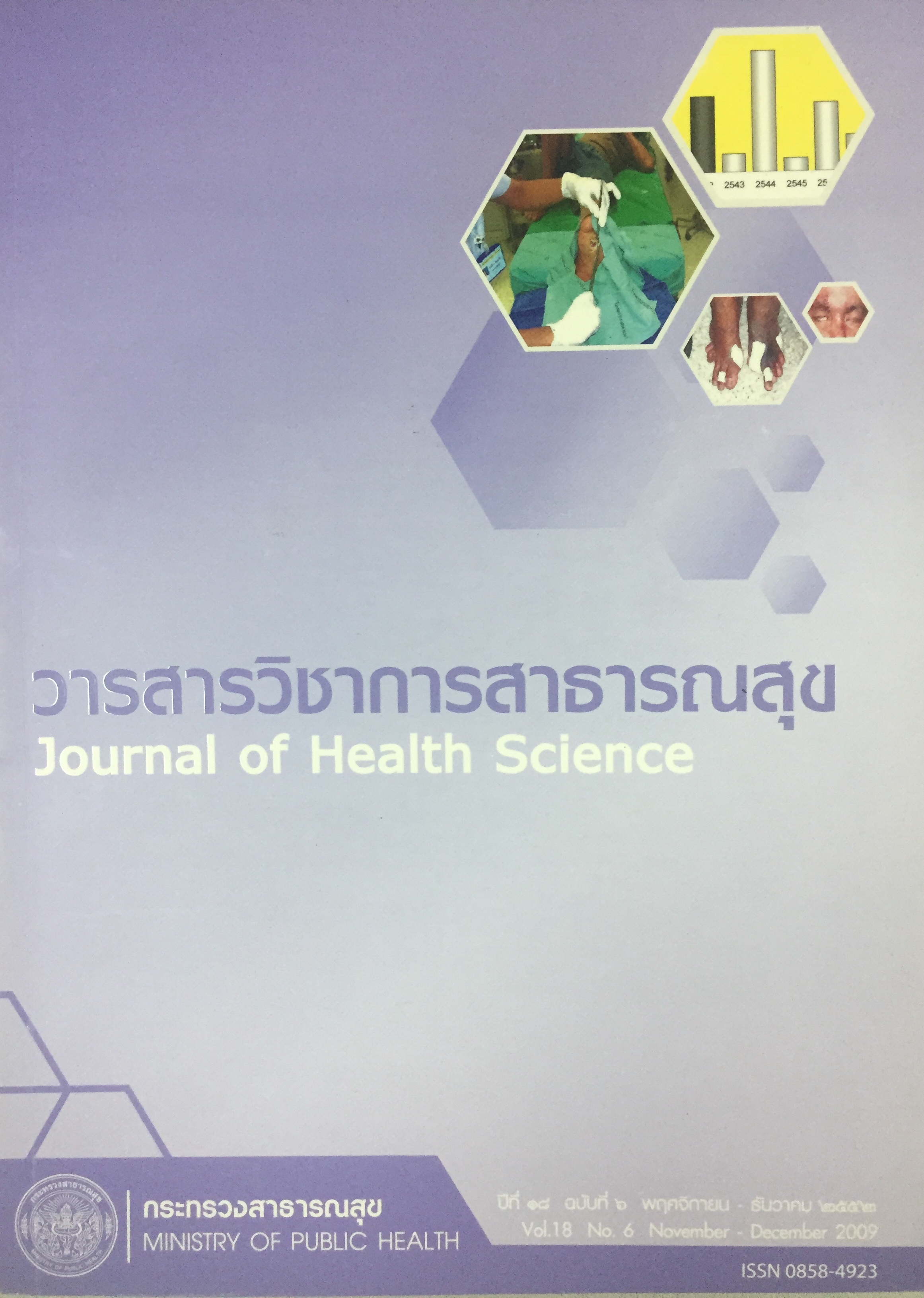Sustainable Alcohol-free Village Model: Ban Non Ma Khuea, Tambon Ka Bin, AmphoeKut Khaopun, Changwat Ubon Ratchathani
Keywords:
village model, alcohol drinkers, alcohol abstinence, alcoholic drinksAbstract
The aim of this action research was to study a Sustainable Alcohol-free Village Model. Themethodology consisted of analysis of condition and situation before development, determining theformation of solution, follow-up according to activities/plans/program of development and evalua-tion. Purposive sampling was used in this research, the population were 111 alcohol addicted per-sons, aged 15-80 years and resided at Ban Non Ma Khuea, Tambon Kabin, Amphoe Kut Khaopun,Changwat Ubon Ratchathani, the time period of this study was between July 2003 and December2007. The tool of data collection was interview and focus group and the data analysis statisticsconsisted of percentage, mean, and standard deviation. It was revealed that 27 operation commit-tees were appointed. Two village and temple regulation posters were made and being posted at 2declaration sites. Whereas posters concerning the non-alcohol campaign in villages and templeswere being posted at 11 sites manifesting the ban of alcoholic beverage distribution in villages andtemples. Sanctions were fine of 10 offenders and 2 grocery owners for alcohol ban violation. Inaddition, a permanent alcohol abstinence clinic was established in an assemble of non-alcoholicdrinking people, holding three panel discussions to share experiences on alcohol abstinence. Pro-viding incentive of 28 cattles for role models was arranged and the villagers vowed to abstain fromalcohol consumption during Buddhist lent for 4 times. Avoiding the alcohol beverage in funerals,Kathin, monkhood ceremony and wedding ceremony were reported. The prevalence rate of alcoholbeverage drinking people in the pretest was 58.11 percent and was reduced to zero in the post-test,thus the way of Sustainable Alcohol-free Village Model establishment should support the strengthof temple, committee, budget and the participation of people.
Downloads
Downloads
Published
How to Cite
Issue
Section
License
Copyright (c) 2018 Journal of Health Science

This work is licensed under a Creative Commons Attribution-NonCommercial-NoDerivatives 4.0 International License.



